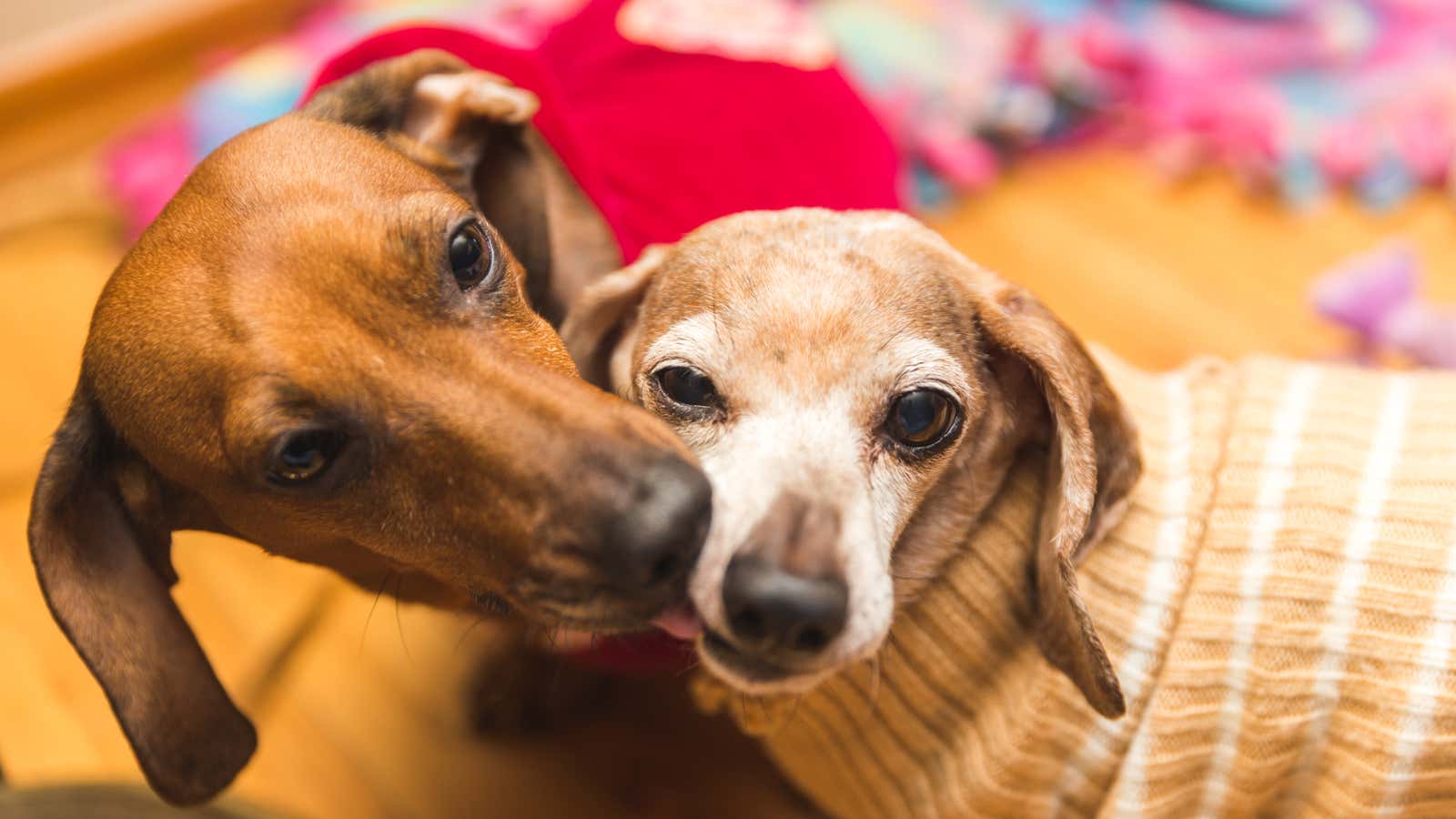How to Socialize an Adult Dog

Dogs that have survived their puppy years may have their own attitudes, but that doesn’t mean training them is hopeless. Whether you are adopting or raising an adult dog, depending on its parentage, socializing can be difficult, but not impossible. Signs that your dog is not socialized can be over-agitation towards other dogs, aggression or shyness towards people, and nervousness when walking. With patience and determination, you can train just about any dog to be more comfortable in most social situations.
Introduce your dog to social situations gradually
Forcing your older dog into an intense social situation – such as playing with a group of large dogs in the park – can generate anxiety and negative associations. You should gradually introduce socialization, evaluate what your dog can tolerate, and develop his social skills. Dog Handler Cesar Millan recommends taking your dog for long walks, introducing him to people and other animals at a distance. “Walking is also great for interacting with dogs because they will have less pent-up energy from exercise and need to be calmer and more submissive,” says Cesar.
Communication is more than just communication with other dogs and people. The Bobbleheads app offers 100 Things in 100 Days – 100 different ways to socialize your dog. Although the list is for puppies between three and four months old, some of the steps may apply to older dogs as well. Actions include exposing your dog to sounds, people, looks, surfaces, and handling. In each exercise, you note whether the dog “hated” it with one star, “Fur” or neutral with two stars and “loved” it with three stars. The stars help you track your dog’s progress.
“Introduce new things with minimal intensity or at a distance,” the app recommends. Once your dog is comfortable at this level, you can gradually increase the intensity or decrease the distance. When doing this, pay attention to the dog’s stress level to gauge its progress. Signs of stress can include pulled back ears, a tucked tail, and even yawning and lip licking. Watch your dog’s reactions to avoid creating a hostile environment when you socialize your dog. The goal is to love it or to feel neutral.
Create a positive environment
Positive reinforcement works for older pets in the same way it does for a puppy. As you increase your dog’s socialization, he will need to know that what is happening around him is good, so reward them with treats or positive interaction. Find out what lifts your dog’s mood, whether it’s food, a favorite toy, or just gentle conversation or touch. Offer this when they are successful in socializing. Jason Nicholas notes on preventive veterinary research :
Just make sure that whatever rewards and reinforcements you use are not distracting enough to completely distract them from their surroundings, as they need some awareness of their surroundings in order to feel more comfortable with them.
It may take longer for the dog to acclimate to any interaction; your patience is integral to your success. Your dog may begin to tolerate closer interaction with the children in the park, but hide every time guests come to visit. Signs of anxiety mean they’re not ready for the family barbecue, so be prepared to take steps back in the process . Create a positive environment again, creating distance again and gradually increasing the interaction as before, and over time you will progress.
Curb enthusiasm
Your dog does not think like a human and may not react the way you expect. Dogs primarily respond with instincts and energy , while humans respond with emotions and dialogues. Don’t try to get the result you want from the dog; instead, be flexible and work with your dog’s capabilities as you discover them. If every time you use the hammer, your dog shows signs of overt malaise, regardless of the level of exposure, you may need to completely distance your dog from this activity. Likewise, there may be some activities that they will never enjoy, no matter how much you think, how much fun they will have. Remain calm, do one thing at a time, and be patient.
Consult a specialist if necessary
Cesar isn’t the only dog handler – you might find someone with special training to help your older dog get along. Adult dogs can have traumatic histories that make it difficult to communicate without trained help. A detailed article ASPCA « Behavioral care for your pet “ can help you find the right type of trainer for the needs of your dog. The Association of Professional Dog Trainers also offers a search engine to find trainers in your area.